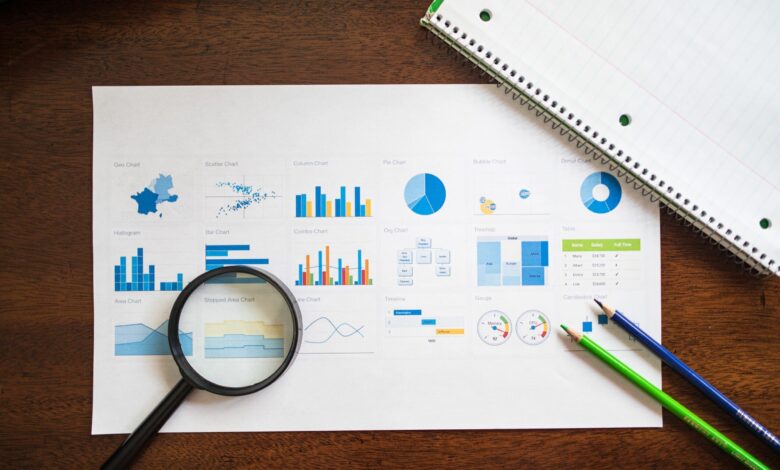How to Visualize Data Effectively in Your Business Reports

How can charts and visuals make business data easier to understand?
Instead of staring at rows of numbers, imagine turning data into simple visuals that highlight trends, problems, or wins in seconds. The right chart can help spot patterns fast, make smarter choices, and explain ideas clearly to any team or client.
No matter the industry, good data visuals turn complex numbers into clear stories. With the right steps, reports can go from confusing to compelling. Ready to learn how to show data the smart way and improve reporting results? Keep reading!
Know Your Goal
Clear goals guide every effective data visualization. Start by defining what you want the report to show. Are you highlighting sales growth, comparing product performance, or tracking customer behavior?
Understanding the purpose helps focus on the most important information and avoids unnecessary details. This clarity makes it easier to select and design visuals that support your message.
Knowing your goal also ensures that the audience quickly grasps the key insights without confusion. Tools like Adobe Express’ graph generator solutions can help align your visuals with your report’s main objectives, making the data both meaningful and easy to understand. With a clear goal, every chart or graph adds value to your business story.
Pick the Right Chart Type
Using the right chart helps people understand the data better. Bar charts are good for comparing things side by side. Line charts show changes over time and help find trends. Pie charts show parts of a whole but should be used carefully so they don’t confuse readers.
Scatter plots show how two things are related. Picking the right chart makes the report easier to read and follow. It also helps people see the main points quickly.
When the chart fits the data well, anyone looking at the report will feel confident that they understand the information correctly. Choosing the best chart makes the data clear and simple for everyone.
Keep It Simple
Too much information can make a chart hard to read. Using simple shapes, colors, and text helps people focus on the main message. Avoid adding extra lines, bright colors, or many labels that can distract or confuse readers.
Clear and simple visuals make it easy to understand the data quickly. Simple charts save time and reduce mistakes when sharing important numbers. Keeping the design clean helps the audience find what matters most without feeling overwhelmed.
When charts are easy to follow, the whole report looks stronger and more professional. Choosing simplicity in visuals lets the story in the data shine through clearly, making the report more useful for everyone.
Use Clear Labels
Labels help people understand what the data shows. Each part of a chart, like the axes or sections, needs clear and easy-to-read names. Avoid using short codes or unclear terms that can confuse readers.
Labels should explain what numbers mean without needing extra explanation. Using simple words and numbers makes the chart more helpful. Clear labels also help when comparing data, so viewers know exactly what they are looking at.
If labels are missing or hard to read, the message can get lost. Good labels guide the reader through the data and make the report easier to follow. Well-labeled charts let everyone understand the information quickly and without mistakes.
Add Helpful Highlights
Using highlights in a chart helps people see the most important parts fast. Bright colors, bold lines, or shapes can show the highest or lowest points. Highlights guide the eyes to what really matters without making the chart too busy.
Too many highlights can confuse readers, so only use them for key information. Good highlights help tell the story in the data and make it easier to understand. They help people focus on the main facts quickly.
Using highlights in a clear way makes reports better and helps readers follow the numbers without trouble. Simple highlights make sure important points stand out and keep the chart easy to read.
Stay Consistent
Using the same colors, fonts, and styles in all charts helps make reports easy to read. When charts look the same, people can understand and compare data without getting confused.
Keeping things consistent lets readers focus on the important information, not on changing designs. This also makes the report look neat and professional. When charts are steady in style, it is easier to find patterns and see differences.
Simple and steady visuals help everyone follow the story in the numbers. Using the same look in all charts helps the message come through clearly and makes the data easier to use for good decisions.
Avoid Misleading Scales
Charts should show data honestly to help readers understand the real story. Using scales that start too high or are uneven can make small changes look much bigger or hide important details. Always check that the scale matches the data so numbers are shown fairly.
A clear and honest scale helps people trust the report and see true differences. Avoiding tricky scales keeps the information easy to read and fair. When scales are right, the chart tells the real story without causing confusion.
Proper scales help everyone see what is really happening in the data and make better decisions based on facts. Good scales are a key part of clear and fair reports.
Use Annotations or Notes
Adding short notes or comments to charts helps explain important points clearly. Annotations can show why a number went up or down or highlight special events that affect the data.
These small details give extra meaning to the visuals and help people understand the story better. Without notes, readers might miss key facts or get confused. Well-placed annotations guide the viewer through the chart step by step.
They make complex data easier to follow and give context that numbers alone can’t provide. Using clear notes helps make the report more useful and complete. Adding these explanations allows readers to grasp the full picture behind the data and better understand the report’s message.
Bringing Your Data to Life with Clear Visuals
To sum it up, effective data visualization turns numbers into clear stories that anyone can understand. Using the right tools and simple designs helps highlight key points and make reports more meaningful.
Clear visuals guide decisions and improve communication across teams. By focusing on clarity and honesty in charts, every business report becomes a powerful tool. This makes sharing data easier and helps unlock better insights for success.
Did you find this article helpful? You can check out our website for more awesome content like this.




